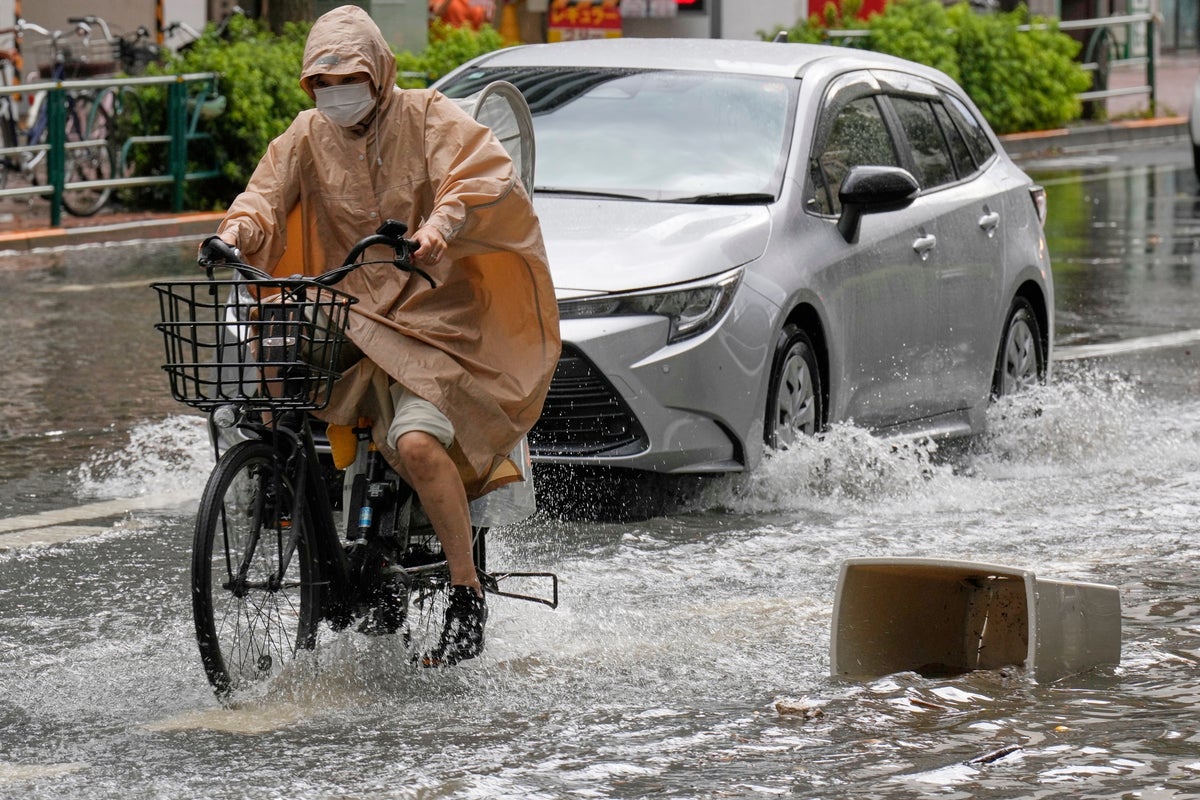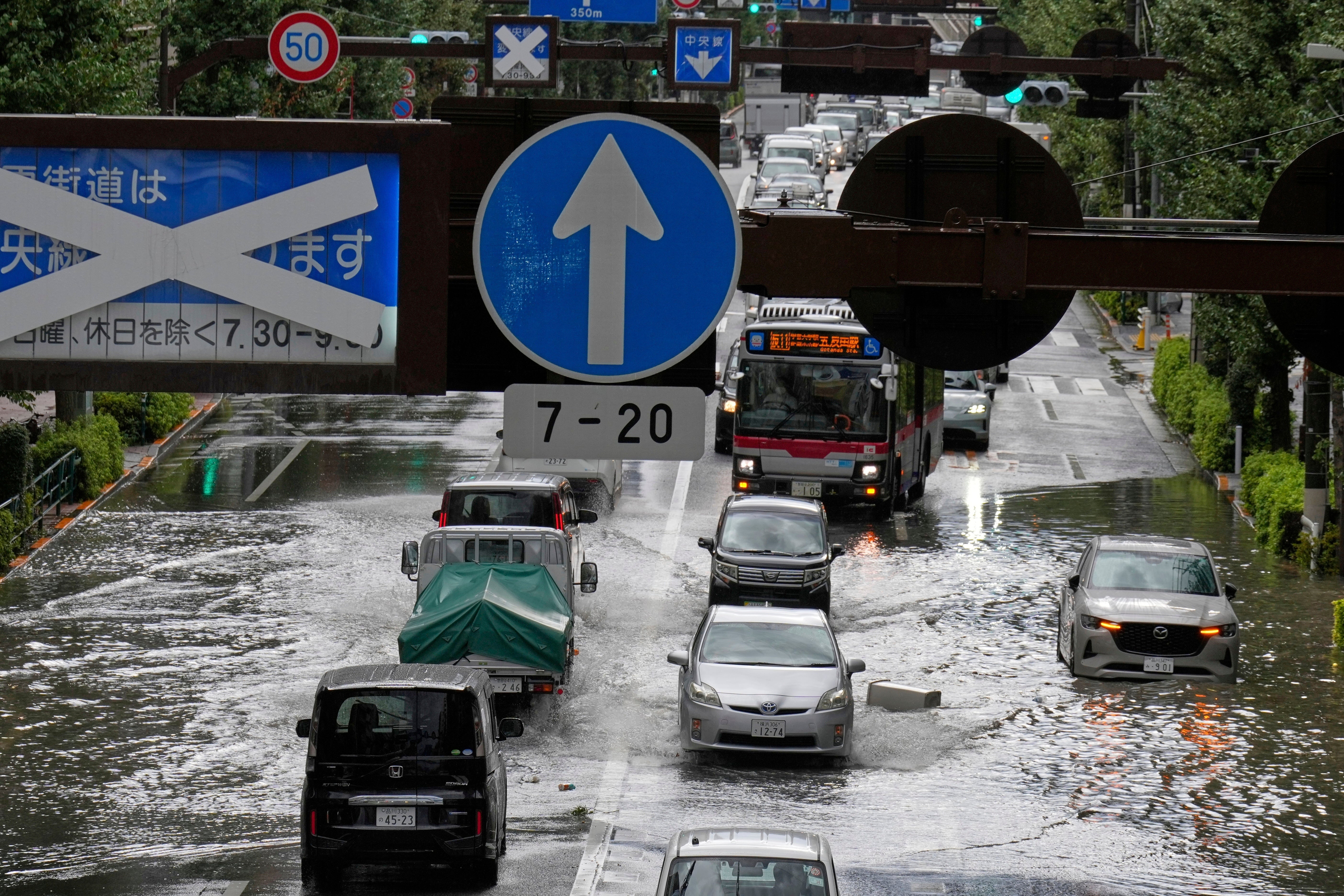
Torrential rain and gale-force winds lashed Tokyo and surrounding areas on Thursday, killing one person, injuring another and leaving thousands of households without power.
Police said two men were crushed when a stack of containers collapsed at a port in the capital city’s Ota ward.
A worker in his 40s operating heavy machinery was pronounced dead at the scene while his colleague, in his 60s, was hospitalised with non-life-threatening injuries.
The downpour brought large parts of the capital to a standstill. Tokyo Electric Power Company Holdings said over 6,200 households lost electricity across the Kanto region, including around 4,200 in the capital, mainly in Shinagawa, Ota and Meguro wards.
The Japan Meteorological Agency reported record rainfall in some districts, with Setagaya Ward getting 92mm and Ota 88.5mm within an hour, the highest ever observed in these areas.
Radar analysis suggested the central parts of the city received more than 100mm rain in the same period – almost half the city’s usual rainfall for the entire month of September. Authorities issued emergency alerts in several wards, warning of river flooding, landslides and lightning.
The Yazawa river overflowed in Setagaya and the Tachiai river burst its banks in Shinagawa, prompting evacuation advisories for over 1,200 households.
Flood risk alerts were also issued for the Meguro, Myoshoji, Shakujii, Nogawa and Senkawa rivers.

Transport networks were severely disrupted. Shinkansen bullet trains between Tokyo and Shin-Yokohama were suspended for more than an hour, affecting an estimated 100,000 passengers before partial services resumed.
Several local train lines, including the Tokyu Meguro, Oimachi, Shin-Yokohama and Ikegami lines, were shut down due to flooding while delays continued on others.
Operations at Tokyo’s Haneda airport were halted from mid-afternoon as ground crews suspended work during lightning strikes, causing flight delays and cancellations.
Heavy rain and thunderstorms are forecast to continue through Friday, with up to 200mm expected in the Tokai region and 100mm in Kanto-Koshin, which includes Tokyo, in the 24 hours to 6pm, according to the meteorological agency.
Japan has faced a succession of severe weather events this summer, with flooding, landslides and record heat adding to mounting concerns about how climate change is amplifying extremes in one of the world’s most densely populated regions.
Locals invited to share views on reintroduction of beavers to Loch Ness area
UK aid for nature hit almost record £800 million last year, analysis shows
Reservoirs less than half full across 12 sites in England
China suffered damage worth £2.2bn in August as monsoon wreaked havoc
Guidance tightened on applications for emergency use of banned pesticides
UK joins international scramble to bring ocean protection treaty into force







